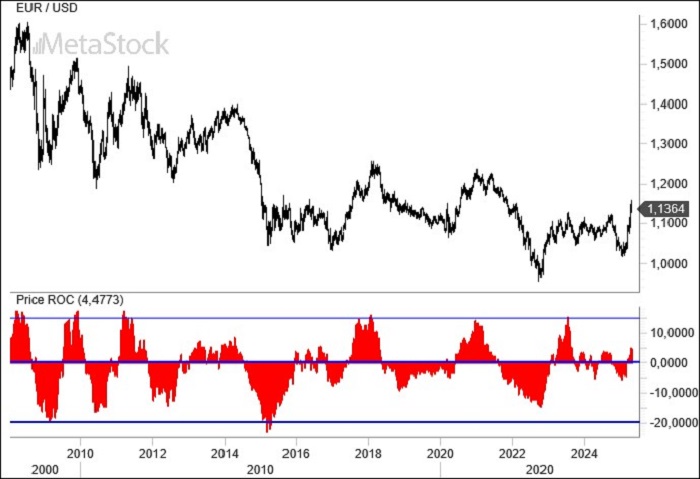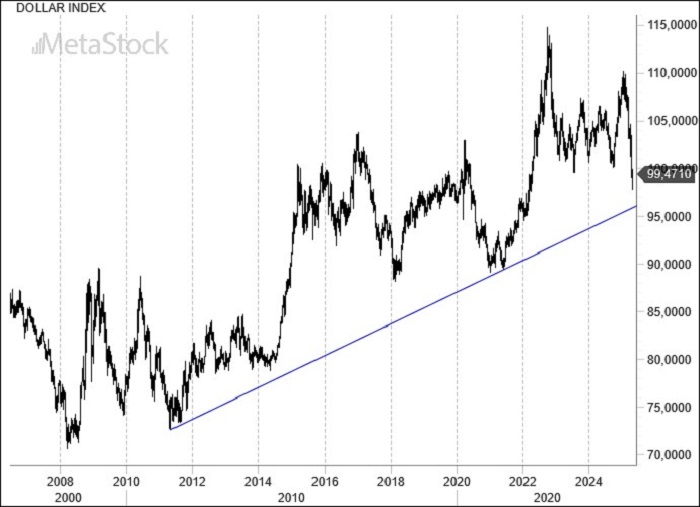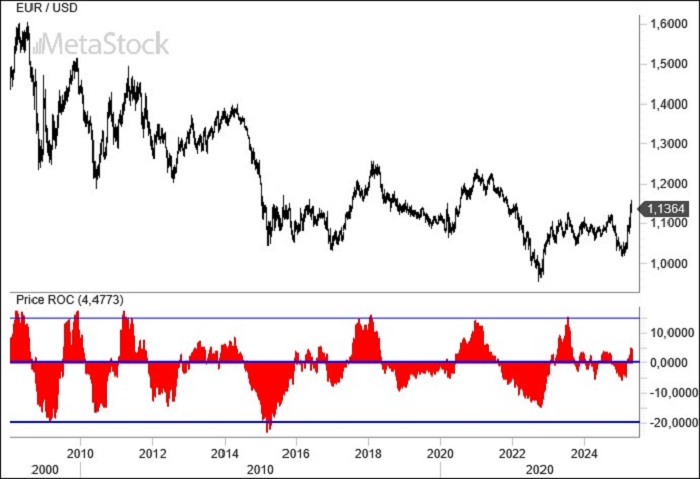- Former President Trump is beginning to send more conciliatory signals toward both China and Federal Reserve Chair Jerome Powell, two targets whose recent clashes had fueled considerable volatility across already fragile markets, amid ongoing trade tensions that have yet to find meaningful resolution.
- Europe appears poised to capitalize on the moment, as capital outflows from the U.S. buoy the euro. This could allow the European Central Bank to navigate the coming months with more breathing room, even as interest rates remain above 2% and inflation trends lower.
- The EUR/USD is currently in a holding pattern after several weeks of gains. Markets are keeping a close eye on the 1.12 support level, which could trigger renewed dollar selling if breached.
Trump Walks Back Threats as Trade and Fed Tensions Cool
Once again, Donald Trump has taken center stage with remarks that, at least this time, appear to have calmed market nerves. Speaking through Treasury Secretary Bessent, the administration acknowledged that tariffs imposed on China — and retaliatory measures — were too high and harming both economies. Trump himself has attempted to reopen dialogue with Beijing.
After a period of intense criticism directed at Fed Chair Jerome Powell — whom Trump had disparaged as “Mr. Too Late” — and in light of the market’s volatile reaction across interest rates, equities, and currencies, the president walked back threats to dismiss Powell. For now, he has tamped down fears over the potential loss of independence at the world’s most important central bank.
Meanwhile, symbolic gestures from China, such as sending Boeing aircraft back to the U.S., have suggested greater caution in tariff negotiations. Talks with Japan and Thailand have also stalled, contradicting earlier claims that multiple trade deals were nearing completion.
Despite a partial rebound in equities on the back of these developments, significant questions remain. U.S. long-term yields are still elevated, and the dollar remains pinned near 1.14 against the euro and 142 against the yen.
In Europe, uncertainty over tariffs and the strengthening euro are providing cover for a more accommodative monetary stance. Futures markets are now pricing in an interest rate 75 to 100 basis points lower twelve months from now compared to current levels.
Weak PMI data — with both manufacturing and services readings falling below the 50 mark — reinforce the case for additional easing. Even wage growth, now running at 1.6% annually, appears consistent with a slowdown in inflation.
Technical Analysis: EUR/USD Eyes Further Gains as Dollar Index Tests Key Supports
From a technical perspective, EUR/USD seems poised for further gains. Looking at past euro rallies during the broader bear market that began after the 2008 financial crisis, history suggests that — aside from the 2013–2014 period — cyclical peaks have typically required at least a 15% rise over roughly 40 weeks. That would imply another 10 percentage points of appreciation from today’s levels.
If history repeats itself, testing — and potentially surpassing — the 1.20 mark could very well be in play over the coming months.

The Dollar Index, after a five-wave advance, has entered a corrective phase. The recent breach below 99.5 marks the beginning of a second leg lower.
This second wave of the correction could target the 95 area — where the magnitude of the decline would match that of the initial pullback and where the long-term uptrend line, in place since the dollar’s 2011 bull market began, would offer potential support.
Alternatively, if the selling deepens, the Dollar Index could slide toward the 85–87 range. That zone contains multiple supports: the 2018 low, the 61.8% retracement of the broader bull market, and the extension level where the second corrective leg would reach 1.618 times the size of the first.
Without a strong contrarian signal yet emerging, both scenarios remain on the table. In any case, it’s clear the dollar’s bottom may not yet have been reached.



Leave a Reply
You must be logged in to post a comment.